Could you post mabey some links to materials you would recomend for building one of these? ![]()
- Formiculture.com
- Forums
- Gallery
- Members
- Member Map
- Chat

Could you post mabey some links to materials you would recomend for building one of these? ![]()
I already did.
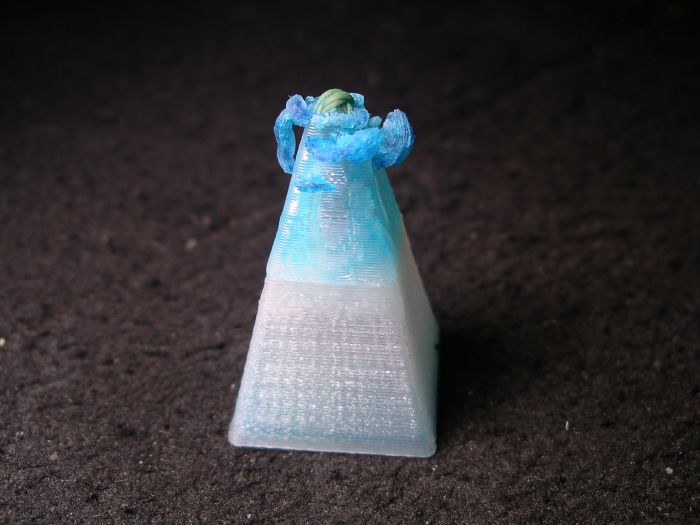
Camponotus vicinus, Crematogaster 1, Crematogaster 2, Formica francoeuri, *, *, Myrmecocystus testaceus, Novomessor cockerelli, Pheidole hyatti, Pogonomyrmex californicus, Pogonomyrmex rugosus, Solenopsis invicta
They're PLA, but that is dried sugar water that slowly oozed out. I'm not exactly sure how that happened; it doesn't seem typical of capillary action.
And how did the rock candy taste, Drew?

"I'm the search bar! Type questions into me and I'll search within the forums for an answer!"
Iluminati Confirmed. ![]()
Currently Keeping:
Tetramorium Immigrans
It could be capillary action -- similar things form in caves (helictites), and they are thought to form my capillary action through very small pores in rock.They're PLA, but that is dried sugar water that slowly oozed out. I'm not exactly sure how that happened; it doesn't seem typical of capillary action.
Edited by cpman, July 12 2017 - 7:03 AM.
It could be capillary action -- similar things form in caves (helictites), and they are thought to form my capillary action through very small pores in rock.They're PLA, but that is dried sugar water that slowly oozed out. I'm not exactly sure how that happened; it doesn't seem typical of capillary action.
Basicaly, a little droplet forms, hardens around the edges first, and then acts as a "tube", so another droplet gets pulled to the front.
If there isn't great bonding between the layers near the tip, it could be acting the same way.
Just a note -- I've seen similar formations of Ca(COOH)2 on CaSO4 when I've tried dissolving plaster on vinegar. I'm pretty sure they were formed from capillary action, because they formed pretty high above the liquid line.
Well yeah, capillary action is what brought the liquid up there. I just don't get why it did exactly what it did. It's not typical at all.
I just don't get why it did exactly what it did. It's not typical at all.
Because, underextrusion and layer separation.

Generally, the layers are more susceptible to separation at the point of a tall object, likely from the increased layer creation speed not allowing for proper cooling (layer separation) or the printer's incapability to provide enough filament due to increased speeds, jams, clogs, misconfigurations, and many other possible issues. Sugar water leaked through and crystallized on the outside creating a tube-like shell and piping the sugar water up (capillary action) and making these "crystals" you see in the picture.
Hit "Like This" if it helped.
I just don't get why it did exactly what it did. It's not typical at all.
Because, underextrusion and layer separation.
Generally, the layers are more susceptible to separation at the point of a tall object, likely from the increased layer creation speed not allowing for proper cooling (layer separation) or the printer's incapability to provide enough filament due to increased speeds, jams, clogs, misconfigurations, and many other possible issues. Sugar water leaked through and crystallized on the outside creating a tube-like shell and piping the sugar water up (capillary action) and making these "crystals" you see in the picture.
The caps are not even close to under extruded. Nothing is coming out of the sides of the cap.
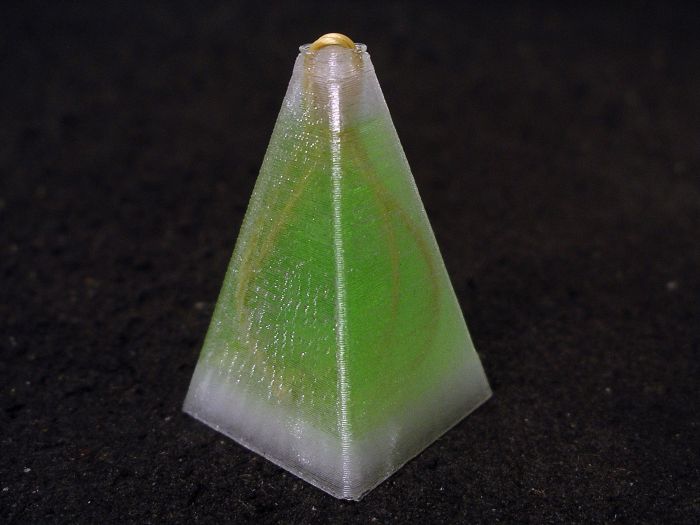
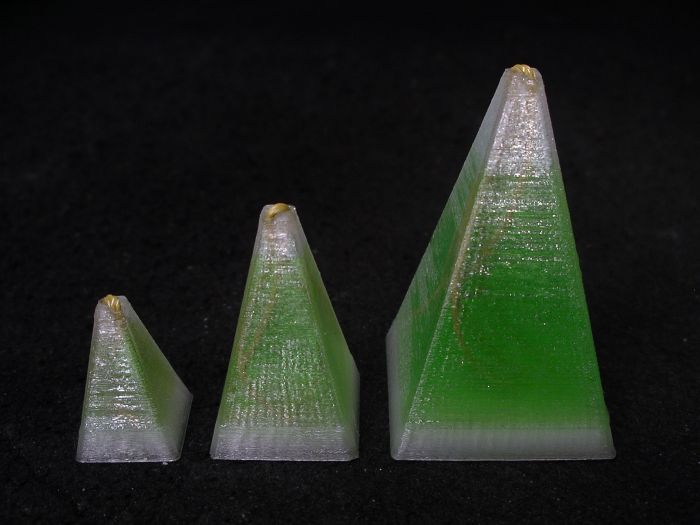
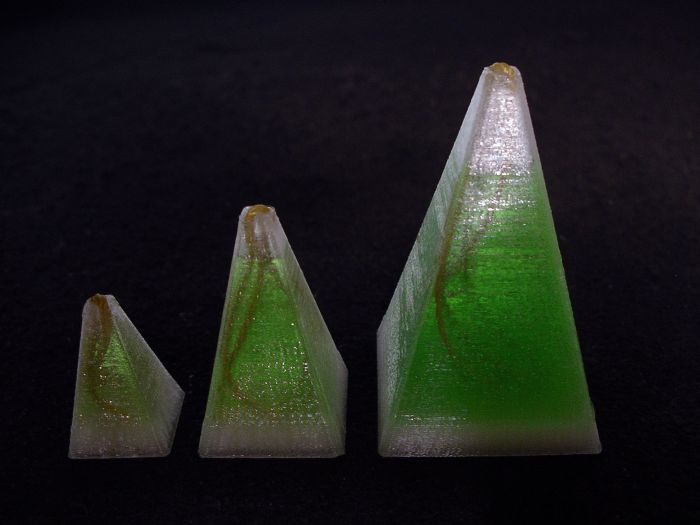
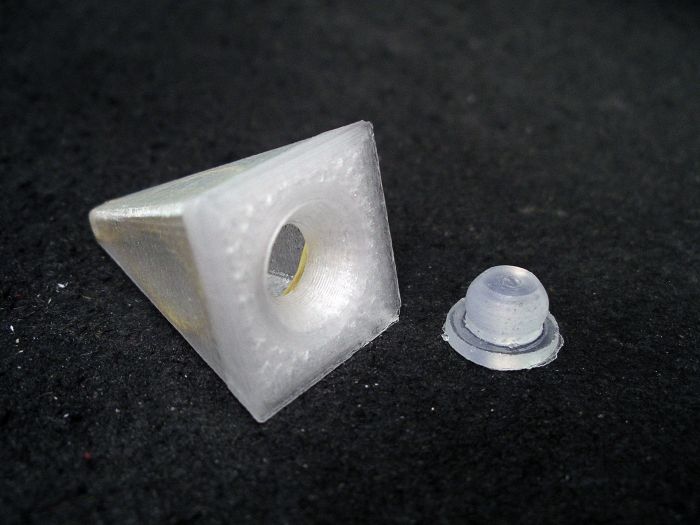
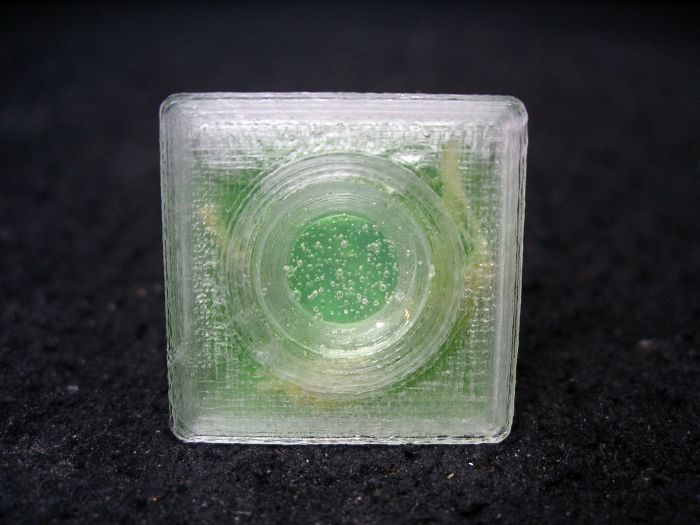
Looks good Drew. Might have to try these out. I've resorted to using aluminum foil. With commercial feeders, the ants just stack dirt and gunk all over it.
Instagram:
nurbsants
YouTube
California Ants for Sale
Unidentified Myrmecocystus
https://www.formicul...ls-near-desert/
Undescribed "Modoc"
https://www.formicul...mp-ca-5-4-2017/
Camponotus or Colobopsis yogi:
https://www.formicul...a-ca-1-28-2018/
Camponotus us-ca02
https://www.formicul...onotus-us-ca02/
Unidentified Formica
https://www.formicul...l-ca-6-27-2020/
Pencil Case and Test Tube Formicariums
https://www.formicul...m-and-outworld/
Bloodworm Soup
https://www.formicul...bloodworm-soup/
would refilling be easier if a really tiny hole just under the string holes were made on the pyramid feeder design, small enough to fit a needle, or by inserting a really hot small gauged needle. that way all one would have to do is insert a needle with some fluon around the syringe and load up some sugar water. I'm thinking more long term with larger colonies- it would be much easier to feed if you didn't have to take out the feeder each time. I'm sure with smaller colonies it would be just as easy to take out and refill.
That would be an interesting modification... I honestly wonder how easy it would be to do such a thing thought, because if it wasn't very difficult, Drew probably would have done it already.would refilling be easier if a really tiny hole just under the string holes were made on the pyramid feeder design, small enough to fit a needle, or by inserting a really hot small gauged needle. that way all one would have to do is insert a needle with some fluon around the syringe and load up some sugar water. I'm thinking more long term with larger colonies- it would be much easier to feed if you didn't have to take out the feeder each time. I'm sure with smaller colonies it would be just as easy to take out and refill.
That would be an interesting modification... I honestly wonder how easy it would be to do such a thing thought, because if it wasn't very difficult, Drew probably would have done it already.would refilling be easier if a really tiny hole just under the string holes were made on the pyramid feeder design, small enough to fit a needle, or by inserting a really hot small gauged needle. that way all one would have to do is insert a needle with some fluon around the syringe and load up some sugar water. I'm thinking more long term with larger colonies- it would be much easier to feed if you didn't have to take out the feeder each time. I'm sure with smaller colonies it would be just as easy to take out and refill.
I've already thought about that. I've had a few ideas, but I'm not sure if they will be compatible with my design. The only way it can be done is using a grommet like the ones that hold the air in basketballs. Otherwise you're just giving small ants a way inside the feeder. There is obviously air pressure issues too. It would all have to be tested.
Right now I'm focusing on trying to make a 100% 3D printed one without the need for kevlar string.
I'd be interested in buying a few... are you selling them?
I've been selling them and giving them away with ant colony and formicarium purchases. The new design still has to be perfected though. I'm still trying to eliminate some minor problems they have had for a long time. Once I perfect them I'll post them up along with everything else I sell. I just haven't really posted anything yet, other than ant colonies in my GAN thread.
I like these, they seem like they would be less susceptible to ants wanting to bury it or stack sand and particles on it.
I like these, they seem like they would be less susceptible to ants wanting to bury it or stack sand and particles on it.
They definitely are.
0 members, 1 guests, 0 anonymous users